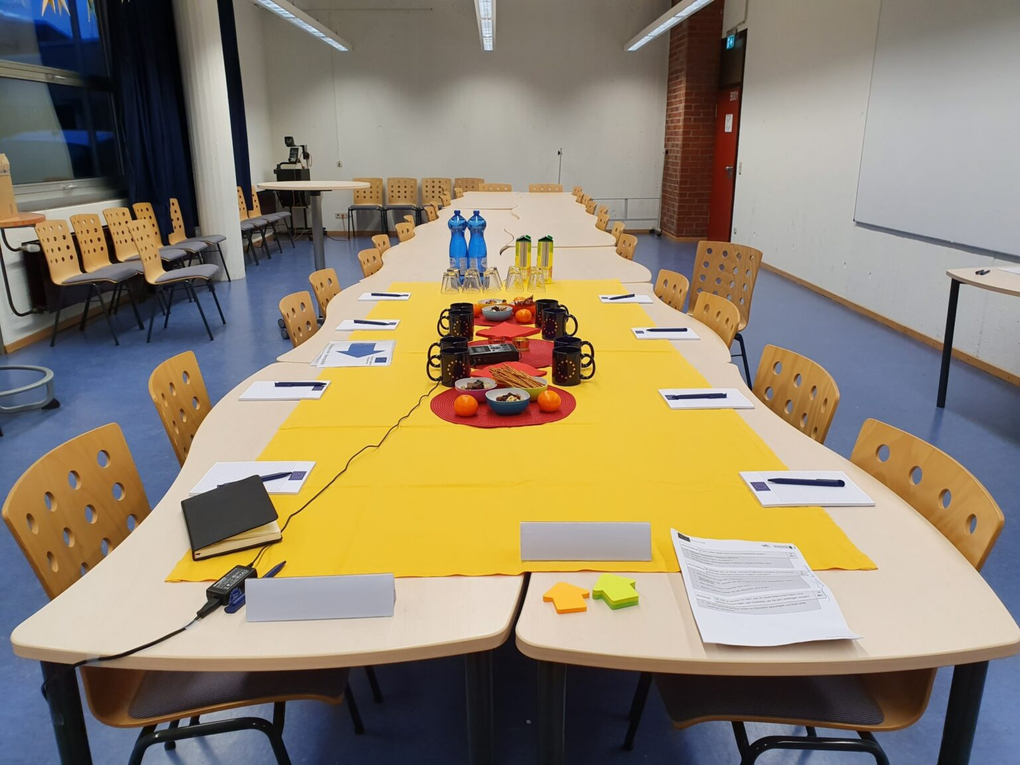What would a good, fair neighbourly relationship with the airport look like?
March 15, 2020
Focus groups to understand airport residents needs for information and communication – a qualitative approach
Introduction
A large part of annoyance due to aircraft noise is influenced by non-acoustical factors like attitude towards the noise source, trust and perceived fairness (Guski, 1999). Most of these factors can best be impacted with honest, transparent and communication and information. Up to now, communication and information on aircraft noise issues are mostly too technical and complex to be understood by lay residents. Understandable and comprehensible information has to be designed in accordance with the needs and expectations of affected airport residents.
Aim of the study
To understand the basics for a fair and neighbourly relationship with the airport, residents were interviewed in focus groups with respect to:
1. The importance of aircraft noise and the airport for their quality of life;
2. Perceptions of the current communication and relationship to the airport;
3. Needs and expectations concerning information about aircraft noise and the airport in general.
Methods
Focus groups
Focus groups are a qualitative research method allowing deep insights in behaviour, perceptions and attitudes of complex issues (Krueger & Casey, 2015). During a focus group, a group of individuals, usually 6 to 12 people, are brought together in a room to engage in a guided discussion of different topics over the course of 2 to 3 hours.
Participants and study procedure
Within the scope of the ANIMA project, at least four focus groups will be conducted at the vicinity of (1) Cologne/Bonn Airport, (2 Dusseldorf Airport (3) Manchester Airport and (3) Charles-de-Gaulle-Airport. Each group consists of 6 to 10 residents who are either highly (> 55 dBA LDEN) or slightly (< 45 dBA LDEN) exposed to aircraft noise at their homes. Groups are mixed in age, gender and long-term annoyance due to aircraft noise.
The focus groups are carried out in municipal venues (e.g. schools) close to the residents’ home (Figure 1). At each airport, interviews are conducted based on a structured discussion guide developed for the study. The following sentences are examples of questions from the guide:
- ”What does the quality of life in your region mean to you? What positive or negative factors play a role?”
- ”What do you personally associate with the airport in your region?”
- ”What would a good, fair, neighbourly relationship with the airport look like?”
- ”On which topics do you wish to receive information?”
 Figure 1: Set up of a focus group discussion in a local school in Cologne
Figure 1: Set up of a focus group discussion in a local school in Cologne
Preliminary results
The preliminary results refer exclusively and exemplarily to the evaluation of three focus groups at Cologne/Bonn Airport. Figure 2 shows answers to the question of relevant positive and negative factors influencing the quality of life. Participants (N=7) resided in a highly aircraft noise-exposed area of Cologne. Factors were arranged by subjects on a numerical rating scale ranging from „-9 = strongest negative influence” to „+ 9 = strongest positive influence”. Participants were completely open to what factors they list. After each subject had placed his or her factors on the scale, the group was asked to find general terms for all positive and negative factors and to establish a ranking. Annoyance from nocturnal aircraft noise and air pollution from air traffic were listed as the main negative factors followed by a lack of security, cleanliness and missing infrastructure in terms of shopping and playgrounds. In terms of the positive factors, good infrastructure (i.e., schools, kindergartens, doctors) ranked first followed by good traffic connection and positive neighbourly relationship among residents.

Figure 2: Arrangement of positive and negative factors for the quality of life on a rating scale ranging from „-9 = strongest negative influence” to „+ 9 = strongest positive influence”
With respect to the question what a good, fair, neighbourly relationship with the airport would look like, both slightly and highly aircraft noise-exposed residents gave similar answers. One category of answers referred to technical and operational changes like a night flight ban and airport`s promise to handle air traffic as quietly as possible (e.g. low-noise approach and departure procedures). Additionally, prevention of damage to property with individual noise insulation was desired. Another category of answers refers to aspects of the relationship to the airport, such as transparency and honesty, the feeling of being heard and being taken seriously. This was also voiced by participants’ requests for cooperation and collaboration. Residents wished for an airport’s attitude of being open to criticism and the willingness to negotiate.
Outlook
At all studied airports, focus groups are intended to be finished, fully transcribed and analysed using qualitative content analysis (Mayring, 2003) until Q2 2020. After that, an intervention campaign suited for the needs of residents living in the airport regions will be designed, further tested and then empirically evaluated. In particular, the development of a quantitative measure for the effectiveness of an intervention focusing on non-acoustical factors is needed.

